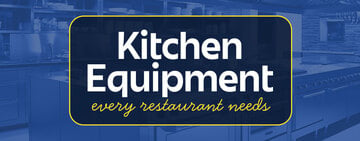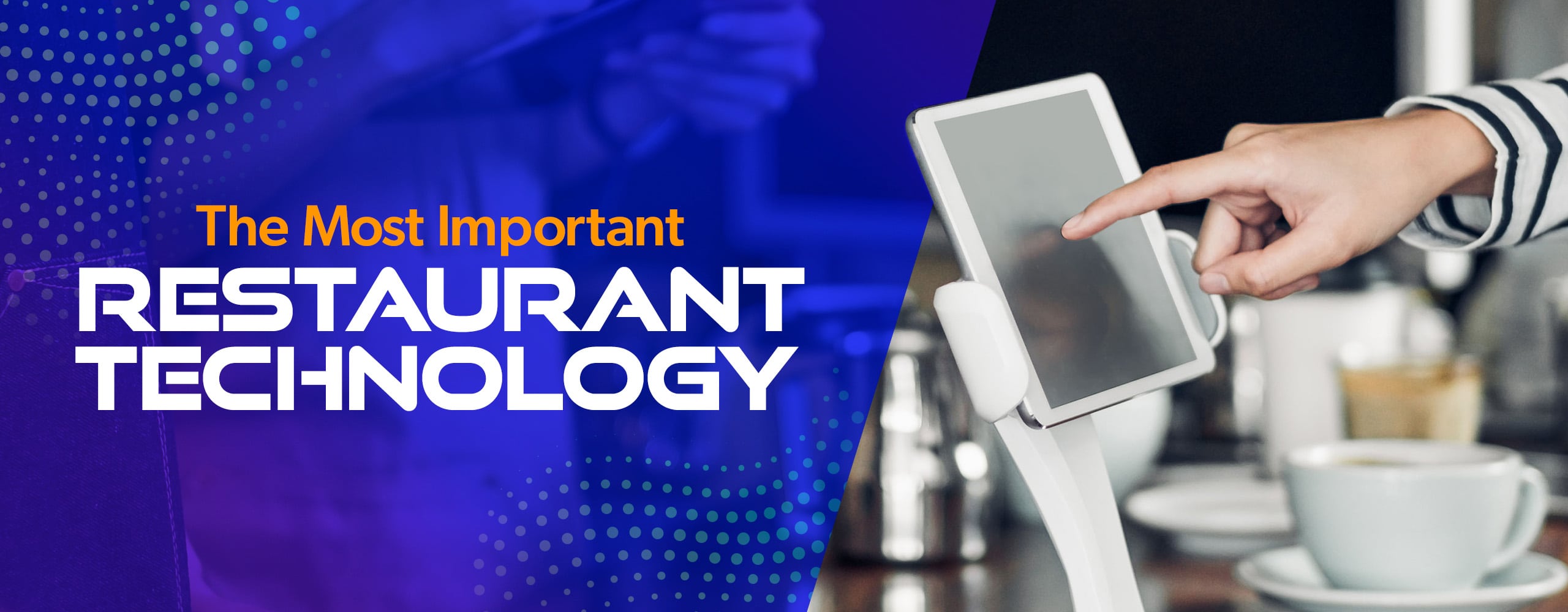
Technology plays a crucial role in the success of any modern restaurant. The latest software for foodservice offers a wide range of features, including inventory management, online ordering, and table reservations, all accessible from a computer or mobile device. On the other hand, hardware options such as point-of-sale systems and self-ordering kiosks provide tangible solutions for tasks like taking orders and processing payments. Choosing the right combination of software and hardware technologies can make a significant impact on the efficiency and profitability of your business. We'll cover some of the most innovative restaurant technology being used today.
1. Point of Sale Systems (POS)
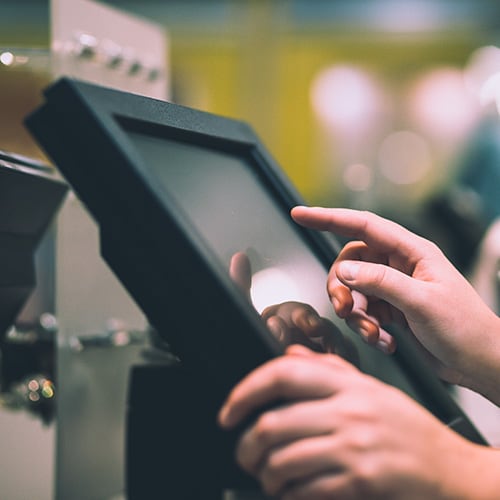
A reliable POS system is the backbone of any restaurant. These systems not only handle transactions but also provide valuable data and reports that help in tracking sales, managing inventory, and analyzing customer preferences. With features such as order management, table mapping, and integration with other applications, POS systems have become an integral part of restaurant operations.
When it comes to selecting a Point of Sale (POS) system for your restaurant, there are several options available to meet your specific needs. Each type of POS system offers unique features and functionalities that can streamline your operations and enhance the overall customer experience. In this section, we'll explore the different types of restaurant POS systems and their key characteristics:
- Traditional POS Systems - Traditional POS systems consist of a computer or terminal with a cash register and various peripherals, such as a receipt printer and barcode scanner. These systems are ideal for small- to medium-sized restaurants that require basic transaction processing and inventory management.
- Tablet-Based POS Systems - Tablet-based POS systems are gaining popularity due to their affordability, mobility, and user-friendly interface. With a tablet-based system, you can use a tablet device as the main terminal and connect it to peripherals like cash drawers, receipt printers, and card readers. Tablet systems are suitable for small- to medium-sized restaurants, food trucks, and quick-service establishments that require flexibility and mobility.
- Cloud-Based POS Systems - Cloud-based POS systems operate on a web-based platform and store data in the cloud, allowing you to access your restaurant's information from anywhere with an internet connection. These systems offer advanced features like real-time reporting, inventory management, tableside ordering, and integration with online ordering platforms. Cloud-based POS systems are suitable for restaurants of all sizes, especially those with multiple locations or a focus on online ordering and delivery.
- Mobile POS Systems - Mobile POS systems allow servers to take orders and process payments directly at the table using a handheld device like a smartphone or tablet. These portable systems improve tableside service, reduce errors, and expedite the payment process, resulting in increased table turnover and customer satisfaction. Mobile POS systems are suitable for restaurants with a focus on fine dining, outdoor seating, or fast-paced environments.
2. Kitchen Display Systems (KDS)
Kitchen display systems eliminate the need for paper tickets and manual order management. With a digital display, orders are sent directly from the point of sale (POS) system to the kitchen display, ensuring real-time updates and minimizing the risk of errors. This seamless integration allows chefs and kitchen staff to stay organized and prioritize orders based on their urgency, resulting in faster ticket times and improved customer satisfaction.
Check out some of the benefits of investing in a kitchen display system:
- Customizable Display Layouts - Every kitchen operates differently, and a one-size-fits-all approach simply doesn't cut it. Kitchen display systems offer the flexibility to customize the display layout to match the unique needs of your establishment.
- Enhanced Communication - Communication breakdowns can be a major hurdle in any busy kitchen. With kitchen display systems, such issues become a thing of the past. These systems facilitate seamless communication between front-of-house and back-of-house staff.
- Increased Efficiency - Time is money in the foodservice industry, and kitchen display systems help maximize efficiency. By eliminating the need for manual order entry and paper tickets, staff can focus on preparing meals instead of deciphering handwriting or searching for lost tickets.
- Integration with Other Technologies - Kitchen display systems are not standalone tools; they can seamlessly integrate with other technologies to further enhance your kitchen's capabilities. From POS systems to inventory management software, these systems can be integrated with various tools
3. Online Ordering and Delivery Platforms
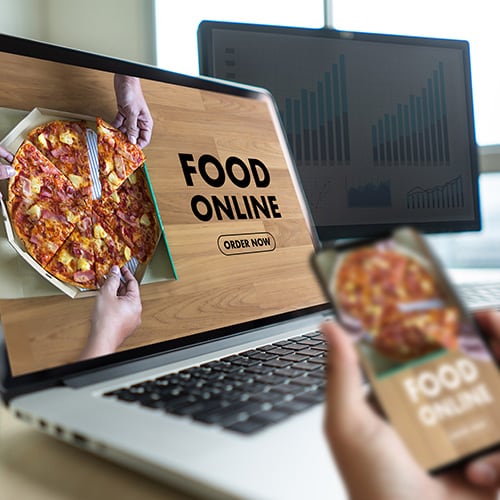
As the demand for online food ordering continues to grow, restaurants are leveraging technology to reach a wider customer base. Online ordering platforms enable customers to place orders through websites or mobile apps, while delivery platforms facilitate the seamless integration of delivery services. These technologies enhance convenience for users and provide restaurants with new revenue streams.
Here are some key facts about online ordering and delivery platforms that every business owner should know:
- Convenience - Online ordering and delivery platforms offer unparalleled convenience for both businesses and customers. By using these platforms, customers can place orders from the comfort of their own homes or offices, saving time and effort.
- Expanded Reach - Online ordering and delivery platforms allow businesses to expand their reach beyond their physical locations. By offering online ordering and delivery services, businesses can cater to customers who may not be able to visit their establishments in person.
- Integration with POS Systems - Many online ordering and delivery platforms seamlessly integrate with point-of-sale (POS) systems, making it easier for businesses to manage their orders and inventory. This integration ensures that orders placed online are automatically reflected in the business's POS system, reducing the chances of errors.
- Customer Insights - Online ordering and delivery platforms provide businesses with valuable customer insights through data analytics. Businesses can track customer preferences, order history, and feedback, allowing them to personalize their offerings and improve customer satisfaction.
4. Inventory Management Systems
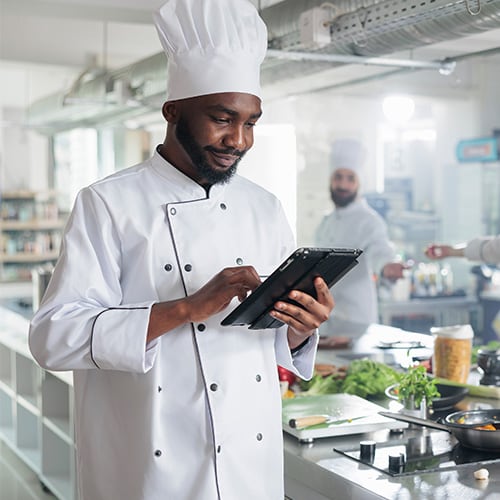
Effective inventory management is necessary for controlling costs and minimizing waste in a restaurant. Inventory management systems are a type of software that helps in tracking stock levels, generating purchase orders, and providing real-time insights into ingredient usage and availability. By streamlining inventory processes, these systems enable restaurants to optimize their supply chain and reduce unnecessary expenses.
We explore some key features of inventory management systems below:
- Automated Tracking - One of the biggest advantages of a restaurant inventory management system is its ability to automate the tracking of your inventory. By integrating with your point-of-sale (POS) system and suppliers, these systems keep a real-time record of all the items in your inventory.
- Supplier Integration - Managing your relationships with suppliers is critical for maintaining a consistent supply of ingredients. A good restaurant inventory management system allows you to integrate with your suppliers, making it easy to place orders and receive updates on delivery times.
- Recipe Management - Another powerful feature of these systems is recipe management. By inputting your recipes and their ingredients into the system, it can accurately calculate the quantities of each ingredient needed based on the number of servings you plan to prepare.
- Inventory Analytics - Understanding your inventory trends and making data-driven decisions is crucial for running a successful restaurant. A restaurant inventory management system provides you with detailed analytics and reports on your inventory, such as usage patterns, stock levels, and cost of goods sold.
Back to Top
5. Reservation and Table Management Systems
Restaurant reservation systems are essential tools for managing reservations and ensuring a smooth dining experience for both guests and staff. These systems automate the reservation process, allowing restaurants to manage their table availability and provide better customer service.
Many restaurant reservation systems integrate with point-of-sale (POS) systems. This integration enables staff to access reservation details, customer information, and table assignments directly from the POS system, streamlining operations and reducing manual data entry. Learn more about the advantages of reservation systems below:
- Online Booking - One of the primary features of a restaurant reservation system is the ability to accept online bookings. Customers can easily make reservations through the restaurant's website or mobile app, eliminating the need for phone calls and saving time for both parties.
- Real-Time Availability - A good reservation system provides real-time updates on table availability. This means that as soon as a reservation is made, the system updates the availability status, preventing double bookings and ensuring accuracy.
- Table Management - Restaurant reservation systems often include table management features that allow staff to optimize seating arrangements. These features enable restaurants to assign specific tables to reservations based on customer preferences, party size, and available seating options.
- Waitlist Management - In addition to managing reservations, restaurant reservation systems often include waitlist management functionality. This feature allows restaurants to track and manage customers who do not have a reservation but are interested in dining at the establishment.
6. Smart Kitchen Equipment
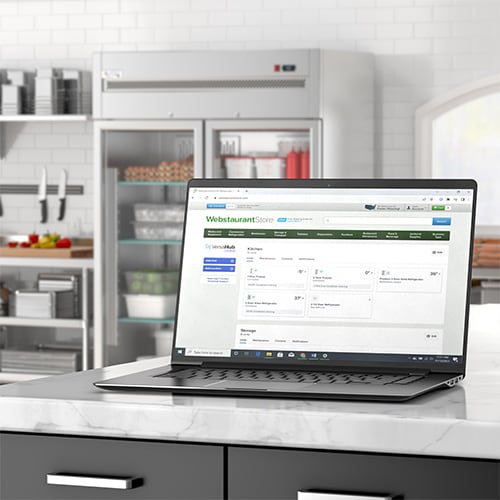
Smart kitchen equipment is revolutionizing the way restaurants operate, making tasks more efficient and streamlined. These advanced appliances and gadgets are designed to enhance productivity, save time, and improve overall performance in the kitchen. You'll find a range of smart equipment for commercial kitchens such as WiFi enabled refrigeration, combi ovens, and dishwashers. Learn more about the benefits of smart equipment below:
- Cost Savings - Smart kitchen equipment is designed to be energy-efficient, which can result in significant cost savings for commercial kitchens. These appliances are equipped with sensors and advanced technology that optimize energy consumption, reducing utility bills without compromising performance.
- Data-Driven Insights - Another advantage of smart kitchen equipment is its ability to provide valuable data and insights. By collecting and analyzing data on usage patterns, energy consumption, and equipment performance, businesses can make informed decisions to improve efficiency and productivity. This data can also help identify maintenance needs and prevent potential breakdowns, minimizing downtime and ensuring uninterrupted operations.
- Remote Monitoring and Control - Many smart kitchen appliances offer remote monitoring and control capabilities, allowing chefs and managers to keep an eye on kitchen operations even when they are not physically present. This feature is particularly beneficial for multi-location businesses or those with limited staff.
- Improved Safety - Smart kitchen equipment often comes equipped with advanced safety features that help prevent accidents and ensure a safe working environment. Features like automatic shut-off, temperature control, and fire detection systems help minimize the risk of fire, burns, and other hazards.
7. Customer Relationship Management (CRM) Systems
A restaurant CRM system, or customer relationship management system, is a software solution designed to help restaurant owners and managers better understand and engage with their guests. With the increasing importance of customer satisfaction and loyalty in the highly competitive foodservice industry, a CRM system can be a valuable tool for improving customer service, increasing repeat business, and driving revenue growth.
Learn about the important features of a CRM system below:
- Customer Database - A restaurant CRM system allows you to create a comprehensive database of customer information, including contact details, order history, preferences, and feedback. This centralized database enables you to track and analyze customer behavior and tailor your offerings to their specific needs.
- Customer Segmentation - By categorizing your target market based on criteria such as demographics, purchase history, or frequency of visits, a CRM system helps you identify different customer segments.
- Loyalty Programs - Many restaurant CRM systems offer built-in loyalty program functionality, allowing you to reward and incentivize your most loyal customers. This feature enables you to create personalized offers, discounts, or exclusive promotions, fostering customer loyalty and encouraging repeat visits.
- Feedback Collection - A restaurant CRM system often includes tools for collecting and analyzing customer feedback. This feature allows you to gather valuable insights into customer satisfaction levels, identify areas for improvement, and address any concerns promptly.
- Email Marketing - With a CRM system, you can automate email marketing campaigns to engage with your clientele regularly. This feature enables you to send targeted promotions, event announcements, or personalized newsletters, keeping your brand top-of-mind and driving customer engagement.
Please Note: Make sure the CRM system provides robust security measures, such as encryption and user access controls, to protect customer data from unauthorized access. CRM providers must comply with relevant data protection laws. If you're not quite ready to invest in a CRM system, try something simpler like a guest feedback app. Ovation is a feedback platform that helps you connect with your guests through short surveys.
8. Self-Order Kiosks
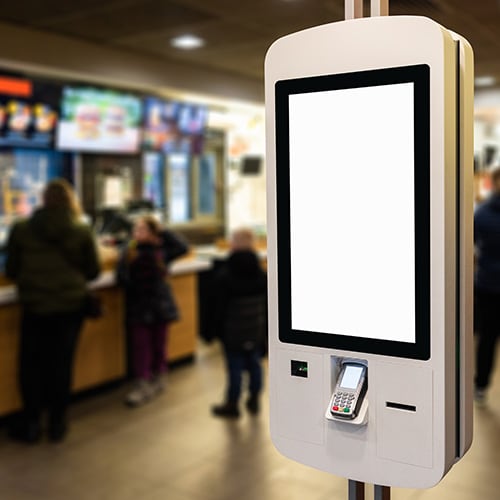
A self-order kiosk is a digital device that allows customers to browse a menu, customize orders, and pay for their food all on their own. These kiosks are typically placed at the front of a restaurant or in a designated area, making them accessible for users.
One of the key benefits of self-order kiosks is the speed and efficiency they bring to the ordering process. With a traditional ordering system, customers have to wait in line, often leading to long wait times during peak hours. However, with a self-order kiosk, guests can bypass the line and quickly place their order, reducing wait times and improving overall customer satisfaction.
Learn how a self-order kiosk can have a positive impact on your business below:
- Task Automation - Using self-order kiosks frees up your staff members so they can perform other more-important tasks.
- Increased Order Accuracy - By allowing guests to input their orders directly into the system, self-order kiosks significantly reduce the chances of miscommunication or misunderstandings. This leads to improved order accuracy, minimizing the risk of incorrect or incomplete orders. Customers can also view their orders on the screen before finalizing, allowing them to make any necessary changes or additions.
- Upselling and Cross-Selling Opportunities - Self-order kiosks can be programmed to display suggestive upsells or cross-sell options during the ordering process. By highlighting add-ons, upgrades, or combo deals, businesses can maximize their sales potential.
- Enhanced Order Customization - Self-order kiosks provide the flexibility to customize orders to meet specific dietary preferences or requirements.
Back to Top
Technology is revolutionizing the way restaurants operate, making tasks more efficient, improving customer experiences, and increasing profitability. From the front of the house to the back, technology plays a crucial role in streamlining operations and enhancing overall performance.




